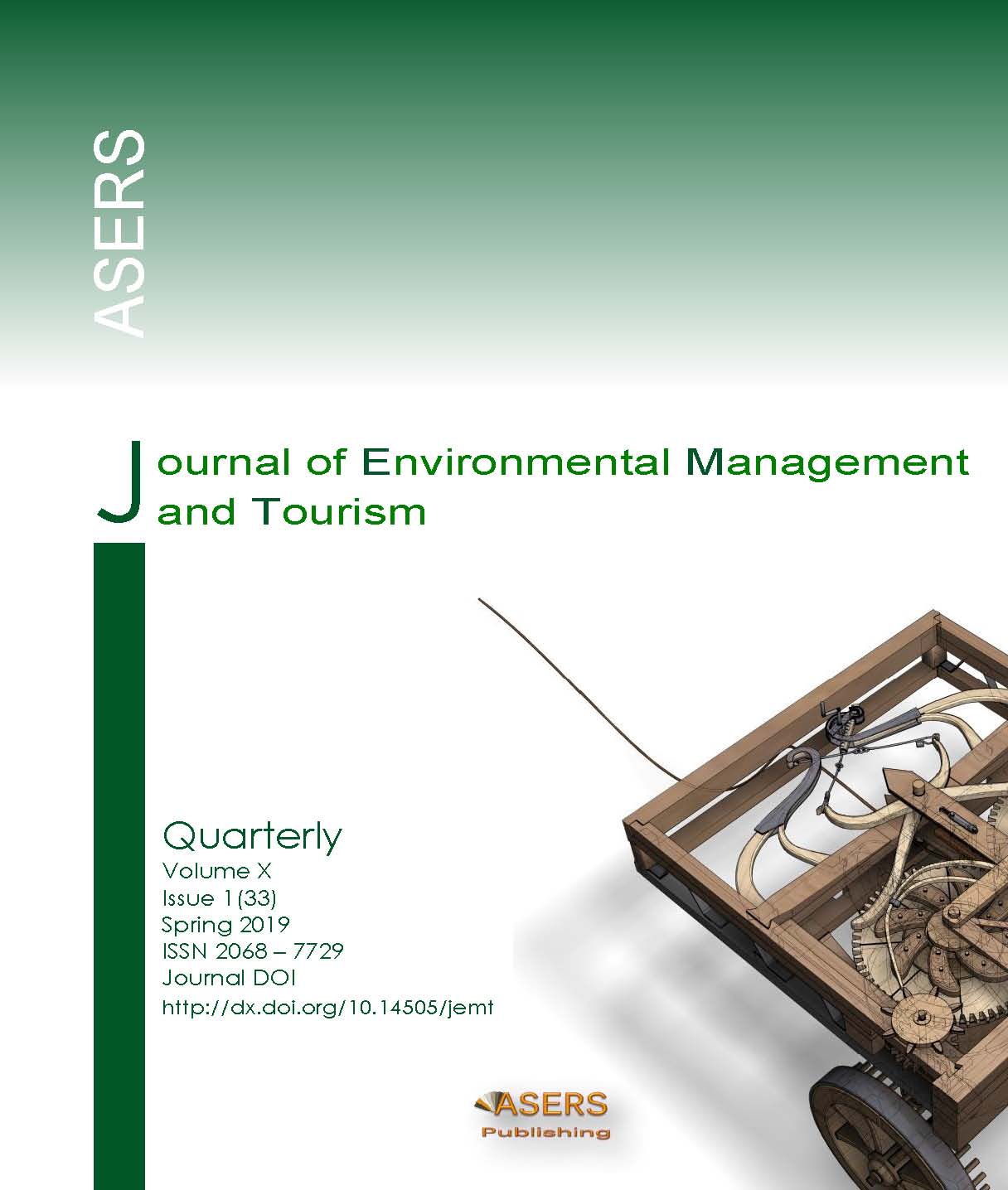Economic and Environmental Benefits of Using Waste Potential as a Valuable Secondary and Energy Resource
Abstract
The article is devoted to solving the problems of recycling in Ukraine, as the accumulation of waste every year becomes more and more threatening. Waste accumulated in landfills occupies 7 percent of the territory of Ukraine (more than 43 thousand km2), which simultaneously leads to pollution of water, soil, air and the deterioration of the ecological and economic situation in general. The experience of European countries in dealing with waste indicates the complexity and effectiveness of measures for their effective management, which is not currently available in Ukraine. The main objective of the article is to provide proposals on improving the processes of safe waste management in Ukraine, taking into account the EU experience and identifying a number of measures that will facilitate the effective management of solid household waste in Ukraine. The object of the research is municipal solid waste as a source of valuable secondary raw materials, as well as an energy resource. The research methodology includes the application of the dialectical approach and the methods of economic analysis: abstract-logical, statistical-economic, tabular and graphic, monographic, economic-mathematical (extrapolation method). The article highlights the ecological and energy efficiency of the secondary use of a valuable resource of solid household wastes. A scheme for organizing the effective utilization of solid household waste is proposed, the implementation of which is of practical importance in the implementation both at the level of individual communities and the state as a whole.
References
[2] Circular Economy Strategy Closing the loop – An EU action plan for the Circular Economy. COM. 2015. Available at: http://ec.europa.eu/environment/circular-economy/index_en.htm. Accessed 28 Nov 2018.
[3] Closing the loop - An EU action plan for the Circular Economy. Final COM / 2015/614. Available at: https://eur-lex.europa.eu/legal-content/EN/TXT/?uri=CELEX:52015DC0614. Accessed 18 Dec 2018.
[4] Community Strategy for Waste Management. 1996. Available at: http://aei.pitt.edu/4116/1/4116.pdf. Accessed 8 Jan 2019.
[5] Cremiato, R., et al. 2018. Environmental impact of municipal solid waste management using Life Cycle Assessment: The effect of anaerobic digestion, materials recovery and secondary fuels production. Renewable Energy, 124: 180-188.
[6] Directive 2008/98/EC of the European Parliament and of the Council of 19 November 2008 on waste and repealing certain Directives. Available at: https://eur-lex.europa.eu/legal-content/EN/TXT/?uri=CELEX:32008L0098. Accessed 15 Jan 2019.
[7] Energy Strategy of Ukraine for the period up to 2035 “Safety, Energy Efficiency, Competitiveness”. Order of the Cabinet of Ministers of Ukraine dated August 18, 2017 No. 605-p. Available at: http://zakon2.rada.gov.ua/laws/show/605-2017-%D1%80. Accessed 5 Jan 2019.
[8] File: Municipal waste landfilled, incinerated, recycled and composted in the EU-28, 1995 to 2016. Eurostat Statistics Explainet. Available at: https://ec.europa.eu/eurostat/statistics-explained/index.php?title=File:Municipal_waste_landfilled,_incinerated,_recycled_and_composted_in_the_EU-28,_1995_to_2016_.png. Accessed 16 Jan 2019.
[9] Geletukha, G.G., Zheliezna, T.A., Drahniev, S.V. and Bashtovyi, A. I. 2018. Prospects for using biomass from agrarian pruning and plantation removal in Ukraine. Industrial Heat Engineering, 40(1): 68-74. DOI: https://doi.org/10.31472/ihe.1.2018.10
[10] Gorobets, O. 2013. Directions of improvement of management of waste management in Ukraine. Economy. Management. Innovation (1). Available at: http://nbuv.gov.ua/UJRN/eui_2013_1_16
[11] Kaletnik, G. and Pryshliak, N. 2019. Bioenergy potential development of the agrarian sector as a component of sustainable development of Ukraine. Management mechanisms and development strategies of economic entities in conditions of institutional transformations of the global environment: collective monograph. Edited by M. Bezpartochnyi, in 2 Vol. ISMA University, Riga: “Landmark” SIA, 1: 96-104.
[12] Kaletnik, H., Pilvere, I., Nikolaenko, S., and Bulgakov, V. 2017. Investigation of biofuel production possibilities for stabilisation of agro-industrial complex of Ukraine. Engineering for Rural Development, 1250-1256. DOI: 10.22616/ERDev2017.16.N273
[13] Law of Ukraine on Waste of March 5, 1998 No. 187/98-ВР. Available at: http://zakon3.rada.gov.ua/laws/show/187/98-%D0%B2%D1%80 Accessed 22 Jan 2019.
[14] Municipal waste statistics. Eurostat. 2017. Available at: https://ec.europa.eu/eurostat/statistics-explained/index.php?title=Municipal_waste_statistics. Accessed 17 Jan 2019.
[15] Official site of the Ministry of Ecology and Natural Resources of Ukraine. Available at: https://menr.gov.ua/. Accessed 7 Jan 2019.
[16] Report in the EU Tacis project. 2004. What solid household waste is composed of? Available at: http://granik.com.ua/files/Sostav%20TBO.pdf. Accessed 11 Jan 2019.
[17] The official website of the State Statistics Committee of Ukraine. Available at: http://www.ukrstat.gov.ua/. Accessed 20 Jan 2019.
[18] The sixth national communication of Ukraine on climate change. 2014. Ministry of Ecology and Natural Resources of Ukraine. State Service of Ukraine for Emergency Situations. National Academy of Sciences of Ukraine. Ukrainian Hydrometeorological Institute. Kyiv, 323 pp.
[19] Trofimov, I. 2014. Assessment of the impact of domestic waste on the ecological state of Ukraine. East European Journal of Advanced Technology, 2 (10), 25-29: 25-29.
[20] Zulauf, C., Prutska, O., Kirieieva, E. and Pryshliak, N. 2018. Assessment of the potential for a biofuels industry in Ukraine. Problems and Perspectives in Management, 16(4): 83-90. DOI: http://dx.doi.org/10.21511/ppm.16(4).2018.08
Copyright© 2025 The Author(s). Published by ASERS Publishing 2025. This is an open access article distributed under the terms of CC-BY 4.0 license.
